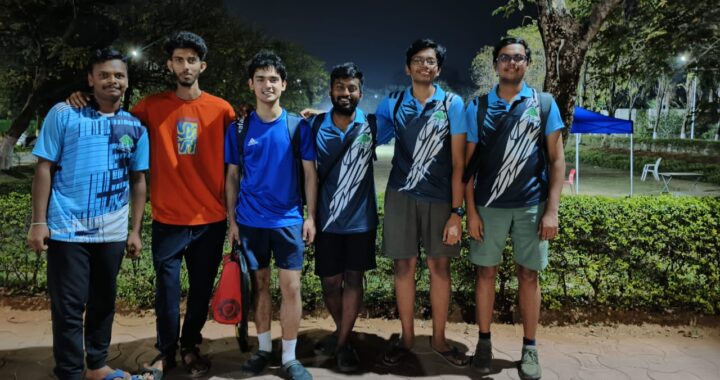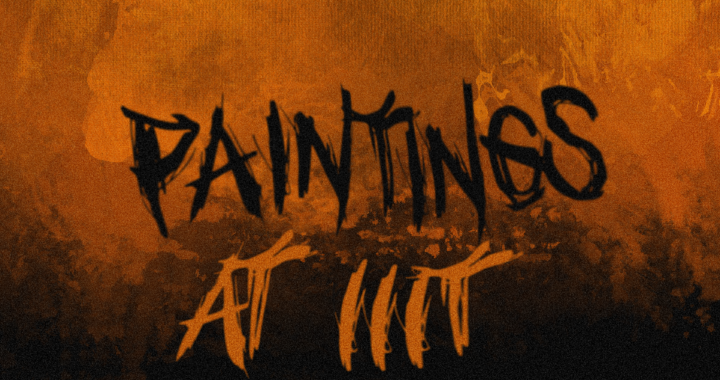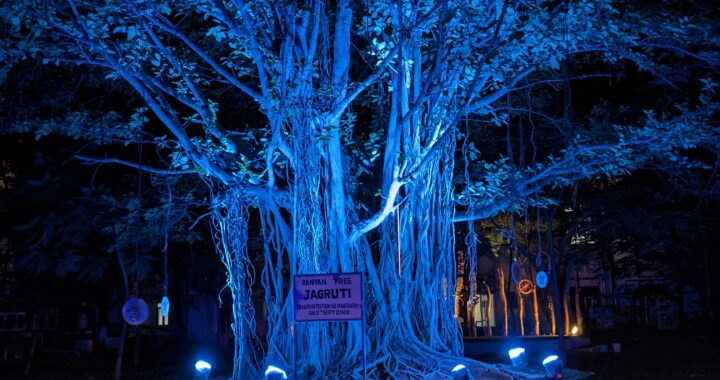Hailstorms turn into beautiful drizzle
In January, when I received a mail informing me that the CCNSB was planning on organizing a symposium in two months, I wondered what it would be like for me to have an entire day bombarded with discussions on Science, amongst geniuses from different fields talking in Greek and Latin. This was my reaction despite being a dual degree student in CNS and so was the case with my batch-mates. And, whenever I peep into the PhD and MS labs on the second floor in the Vindhya building, I am in awe of my seniors engrossed in something that I do not really make sense of. But then, one dormant corner of my brain reminded me of recurring lines in the poem by John Keats ‘A Thing of Beauty is a Joy Forever’. And there it was — the answer. Science is simply a source of perennial joy and happiness to one who understands its beauty.
On the sunny morning of 26th February, 2012, members of the CCNSB at IIIT-H were a mix of emotions. Some tensed, some excited, some anxious, some perplexed and others too pre-occupied to be any of these. It was their first one-day symposium, titled ‘Current Trends in Computational Natural Sciences’. The Centre plans to make this a regular annual affair. All 140 participants, of which 40 were from colleges other than IIIT-H, were registered formally, handed over an abstract book which contained a glimpse of all talks to be held throughout the day and a name-tag. The programme began commendably as per schedule, with an inaugural address by Dr. Rajeev Sangal reminiscing his days when he stayed at the HCU campus and made life-long acquaintances — many of whom were present as speakers. The entire day was broken up into three sessions; each of them chaired by Professor Kalidas Sen from HCU, Dr. Harjinder Singh and Dr. Abhijit Mitra.
The symposium began on a bright side with an intriguing talk on “Deterministic Chaos: The middle kingdom” by the keynote speaker Professor R. Ramaswamy, Vice-Chancellor, University of Hyderabad. What followed was a discourse on topics varying from ‘use of computer aided drug design methods for a new class of clinical candidates’ to ‘Insights into condensed phases’. A talk on ‘Multi-scale modelling of memory’ by Professor Upinder Bhalla from NCBS Bangalore was liked by all. From IISER Pune, Professor Arnab Mukherjee’s talk on ‘Molecular mechanism of DNA intercalation’ was preceded by a big applause as it was his first invited speech, revealed by the professor himself. Professor K.P.N. Murthy, whose talk was scheduled in the end, obliged the listeners by skipping a few parts and focusing on what he thought was the essence of his talk.
The Centre had also organized a logo design competition to bring out the creative side of the budding researchers. A bunch of great ideas came to light and two designs by Sourav Chatterjee and Namra Maheshwari, were voted to be the best ones. There was also a best poster competition judged by some of the visiting professors. They had a tough time deciding on the names during an hour long poster session. Eventually Broto Chakrabarty, Krishna Kant Singh, Monika Sharma, S. Ramakrishna and Ragini were hailed winners.
The symposium was a good platform for an exchange of ideas among the professors as well as the students. It was this very spirit with which the event was conceived almost two months ago. The vote of thanks was delivered by Dr. Deva Priyakumar, the convener. He was grateful to all speakers for accepting the invitations within a day of sending requests. The event would not have been such a coordinated one without the help from students, the house-keeping staff and Mr. Debanjan (for all the food arrangements). Towards the end, Dr. Abhijit Mitra did not forget to mention the outstanding work done by Dr. Deva Priyakumar.
Attendance of all undergraduates in the CND branch was made compulsory as informed through mail. Everyone found something to take home and thus, the event was an experience for all. Silently, having expected a day of hailstorms, it turned into a beautiful drizzle (pun intended) helping newly planted seeds like myself to germinate, and to eventually grow into a tree, spreading shade all over.
For more information, one may refer to:
http://www.iiit.ac.in/ccnsb/ctcns/Home.html

 The Mess-y Situation
The Mess-y Situation  Ping! merges with Blogs@IIIT
Ping! merges with Blogs@IIIT  Cricket Corner: Looking Ahead to the Border-Gavaskar Trophy (Pt III)
Cricket Corner: Looking Ahead to the Border-Gavaskar Trophy (Pt III)  A perspective on sports in IIIT
A perspective on sports in IIIT  Paintings of IIIT
Paintings of IIIT  The Tale of Jagruti
The Tale of Jagruti  Cleaning up the Mess?
Cleaning up the Mess?